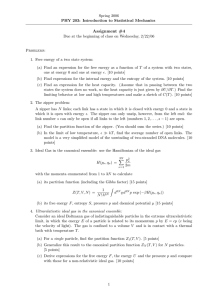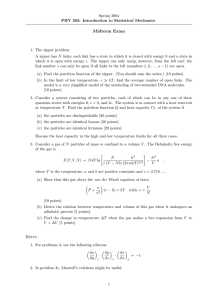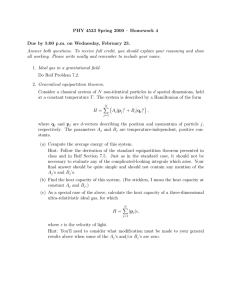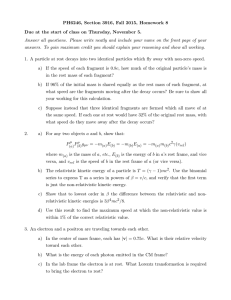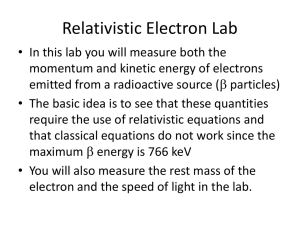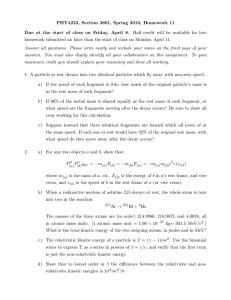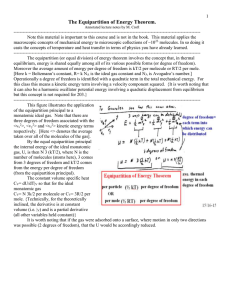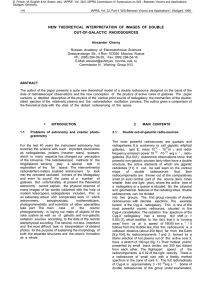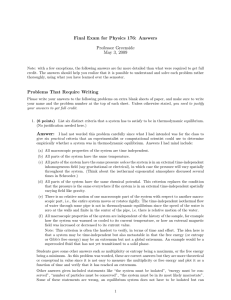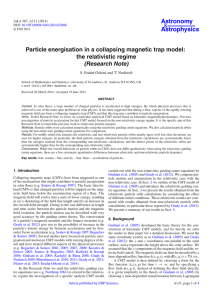Assignment #4
advertisement
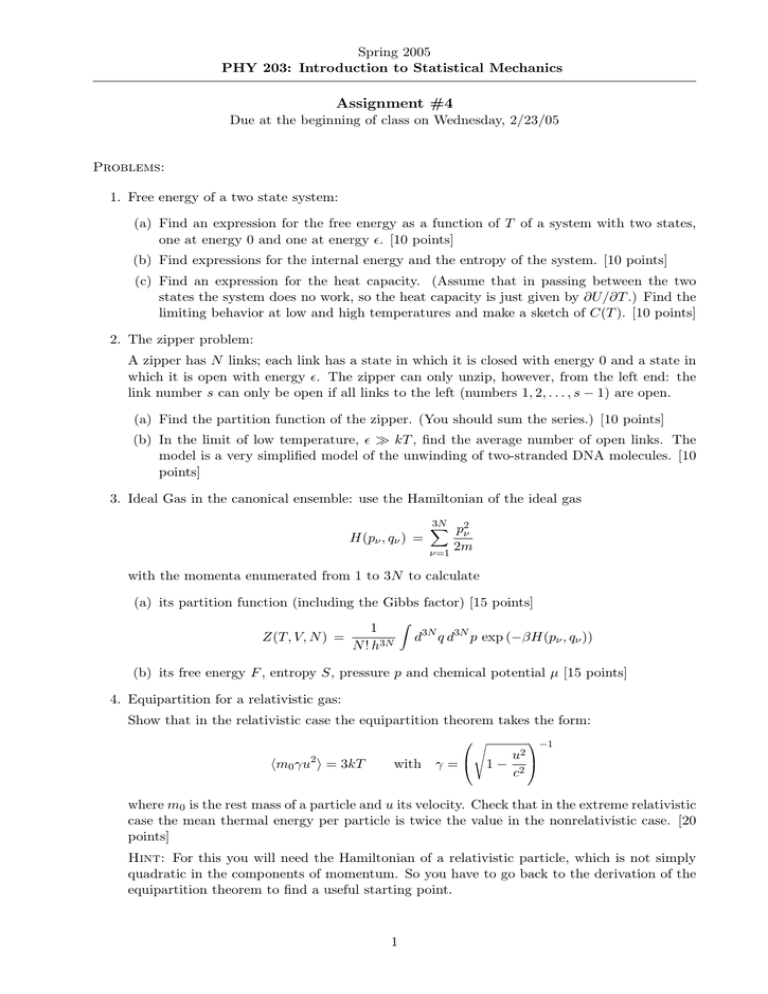
Spring 2005 PHY 203: Introduction to Statistical Mechanics Assignment #4 Due at the beginning of class on Wednesday, 2/23/05 Problems: 1. Free energy of a two state system: (a) Find an expression for the free energy as a function of T of a system with two states, one at energy 0 and one at energy . [10 points] (b) Find expressions for the internal energy and the entropy of the system. [10 points] (c) Find an expression for the heat capacity. (Assume that in passing between the two states the system does no work, so the heat capacity is just given by ∂U/∂T .) Find the limiting behavior at low and high temperatures and make a sketch of C(T ). [10 points] 2. The zipper problem: A zipper has N links; each link has a state in which it is closed with energy 0 and a state in which it is open with energy . The zipper can only unzip, however, from the left end: the link number s can only be open if all links to the left (numbers 1, 2, . . . , s − 1) are open. (a) Find the partition function of the zipper. (You should sum the series.) [10 points] (b) In the limit of low temperature, kT , find the average number of open links. The model is a very simplified model of the unwinding of two-stranded DNA molecules. [10 points] 3. Ideal Gas in the canonical ensemble: use the Hamiltonian of the ideal gas H(pν , qν ) = 3N X p2ν ν=1 2m with the momenta enumerated from 1 to 3N to calculate (a) its partition function (including the Gibbs factor) [15 points] Z(T, V, N ) = 1 N ! h3N Z d3N q d3N p exp (−βH(pν , qν )) (b) its free energy F , entropy S, pressure p and chemical potential µ [15 points] 4. Equipartition for a relativistic gas: Show that in the relativistic case the equipartition theorem takes the form: s hm0 γu2 i = 3kT −1 u2 with γ = 1 − 2 c where m0 is the rest mass of a particle and u its velocity. Check that in the extreme relativistic case the mean thermal energy per particle is twice the value in the nonrelativistic case. [20 points] Hint: For this you will need the Hamiltonian of a relativistic particle, which is not simply quadratic in the components of momentum. So you have to go back to the derivation of the equipartition theorem to find a useful starting point. 1
